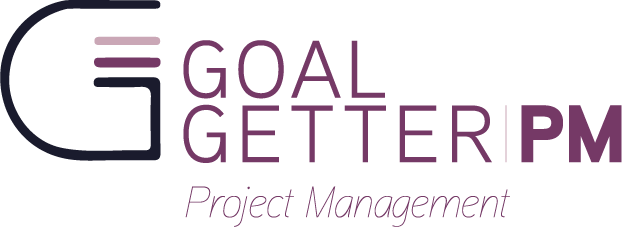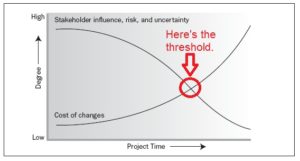
Many projects have been saved by the abundance of funds available for the budget. For some projects, money doesn’t bust a grape in a fruit fight for a successful project. I have said it before in a previous blog, “Your job as a business owner is to solve other’s problems.” If you spend a large amount of your budget on one project that solves very few problems or if you do not market it correctly, you may not see any ROI in your solution.
I’d like to open up the topic of the Business Case. This document is cooler than the other side of the pillow! Who knew that a simple 2-page document could be the kick-off to a project that could make your organization thrive. This document is the good practice first step. It can be as easy or as detailed as you like. Just remember that the goal is to keep it short and effective. Business cases are really quick and easy – as long as you have really put some thought into the problem you want to solve and solutions that really work for your customers.
I’ve written some business cases in a regular composition book – no fluff. That Business Case solution was to choose a trial for CRM automation tool for later purchase. I like to save money. I’ll test drive any product just to learn.
Business Case – Your First Step in a Project
Idea Title
You definitely want to give your project a name. You can make it something basic like “Payment Solution Enhancement” or “Project Orion” should it be a little something that on the James Bond, 007, top-secret solution.
Goal-Getter PM tip: It is best to name a practical project according to the problem you are trying to solve instead of the solution that you find for it. It really helps when you are submitting/presenting a proposal to business partners or affiliates they may need to weigh in (wink).
Business Strategy
There are a few things you will want to address while aligning your project to your organization strategies. As a matter of fact, having a good list of business strategies that you want all of your project to address is a really good idea for any business. It helps a business operate in a more orderly fashion. Some of my business strategies are:
- Target-Client Marketing
- Product Development
- Client Strategy Alignment
- Research and Development
- Cost Savings
It is really helpful to figure out the work you need to do when you align it with your strategy first. It helps to make sure that your project fits in your strategy. If you have a new project that doesn’t fall into your business strategy you may want to ask yourself why you want to do it and how it still makes sense for your business. This will also help you to keep the focus on the scope of the project as you execute it.
Let’s get back to the money – Project Costs
So we’ve already touched on the fact that money doesn’t solve every roadblock you may have in a project. To be honest, when you’re looking to develop a new product/solution for your customers it’s not only important to calculate how much the solution costs now – it is recommended that you project those costs out over a few years in a spreadsheet. Look, very few companies are just going to hit you with just one lifetime-fee for service. Yeah, I’ve been there and they don’t last long. Many online services put you on a countdown clock to give you a chance to pay monthly or yearly for a deep discount.
Having the future costs already on your radar for the next fiscal years is always a good idea for budgeting purposes at the very least. In the financial world, it’s called a proforma. Another part of budgeting that a proforma illustrates are cost savings. If buying one product helps you eliminate the cost of three other services you buy may result in lower expenses for the business. It’s really important to document these savings. It will help remind you why you made the decision to move on with the project or plan the project for another fiscal year.
Goal-Getter PM tip: If you’re still working on funding for your new project, it’s best to find new clients and sell them a current premium service that pays for a whole year of the subscription/s that you may need to leverage your new project and keep it separate from your overhead budget. This is how a lot of companies stay out of debt (double wink). Let’s keep digging…
Risk
Let’s just keep it real, it is rare that a new project goes exactly to plan. Every project experiences a variance of risk. Risks can be a vendor going MIA, raising their price, customers losing interest in your solution, not allocating time properly in order to complete the project by the day you plan to launch, I could go on forever, but I won’t. When creating your Business Case make sure to list out all of the problems that you know that can keep your project from moving at full speed ahead, or keep the project from starting.
Risk is always the highest at the beginning of a project, and the lowest at the end of the project. The goal of assessing risk while creating a Business Case is to understand any extra resources you may need to complete the project successfully. You only need a high-level summary of these risks for this document. If you find your list becoming too long, group them into a few categories instead of going into extreme detail. There’s a risk plan that will detail them later. At this point, you just want to establish what you’re up against.
(PMBOK 5th edition, p. 40)
Integration
Let’s be honest with ourselves. A company has to have the online essentials: website, email marketing, and social media. And we all make sure that they work well together in the sandbox. Integration is a HUGE part of small business operations. Make sure that you understand all the new technology you may need to buy for your project. Goal-Getter PM tip: Beware of add-ons and plugins for applications. They can go as fast as a gazelle in the beginning and end up moving as slow as a turtle.
So when it comes to integration, you may want to look at reviews of the solution you are seeking to make sure you have the systems in place to support it even after the project is complete. Keep in mind that poor integration can make a project useless if your solution is automated. The vendor will be able to inform you about their integration specifications.
Stakeholders
The number one stakeholder is almost always the customer. So in your Business Case, you will want to talk about who the project will serve, even if it includes you, the business owner. You hold almost the same amount of weight when it comes to thinking about projects. It may make your process smoother. What about your partners/affiliates? Yes, you can help them too with a well-prepared business case. All companies that provide services have regulations – the government is your stakeholder too when considering even the collection of customer information; like the GDPR.
You will want to list out everyone that is a stakeholder for your project. It helps when you need to reach out for a Subject Matter Expert for roadblocks.
Remember Scope and Time
If you’re banking on your money to save your project you should hope that it subscribes/shares/follows its two friends: scope and time. Scope and time don’t always rely on the on the money available in the budget. Scope and time can make the struggle oh so real.
Requirements
You do not have to address your business case in this order, however, if you do, you are definitely ready to create a list of requirements for your project. What are the “must haves” of your project? Does it need to reach a dollar amount of ROI? What percentage of customers does it need to impact per month? How many hours of work will it need to save you per week?
When addressing your requirements you are basically documenting all the expectations that you want the project to achieve.
Goal-Getter Reading Recommendation for Business Cases:
Image: https://media.giphy.com/media/l0HFkA6omUyjVYqw8/giphy.gif
© Brianna Sudduth and GoalGetterPM.com, 2016. Unauthorized use and/or duplication of this material without express and written permission from this site’s author and/or owner is strictly prohibited. Excerpts and links may be used, provided that full and clear credit is given to Brianna Sudduth and GoalGetterPM.com with appropriate and specific direction to the original content.

This work is licensed under a Creative Commons Attribution-NoDerivatives 4.0 International License.


